The Dufferin County Museum in Ontario, Canada serves a small community of under 60,000 inhabitants. Ordinarily our visit would entail checking out the reconstructed mid-nineteenth century log house and furnishings, but we were there to attend an exhibit designed by Julie McNevin, Education Programmer, that "features stories of people, past and present, who have shaped and influenced Dufferin County." Julie explained: "Much of the exhibit focuses on 'pioneering spirit,' perseverance and community engagement." It's designed to help students learn to observe and access information, to help them define their own character traits and spur new interests.
The museum is situated north of Lake Ontario, on table-land atop a mountain reached by way of gentle sloping terrain. The building looks like a huge barn and stands at a country cross-roads where fields of corn, wheat or potatoes, a few pastures for dairy cows, and forests of pine and cedar fill the summer vistas. Inside, groups of school kids explore the past and perhaps dream of their futures.
Experiencing a visit to discuss character traits, skills and learn history
I attended the museum with my two fourth and fifth grade girls, who participate with me in our Grandpals program connecting residents of Montgomery Village Senior Residence with Montgomery Village Elementary School pupils. Students sat on cushions on the floor to hear Julie describe the current teaching program titled "True Grit," which will be on display until replaced at the end of 2018. Ringing the hall were fifteen exhibits showing photos of former and present-day locals, together with the instruments of their professions, displayed in brightly-lit showcases. Children were handed clipboards with paper and pencils and were given a list of character traits. They were asked to write answers to questions posed in each exhibit and to list the traits a person should have to prosper in that endeavor.
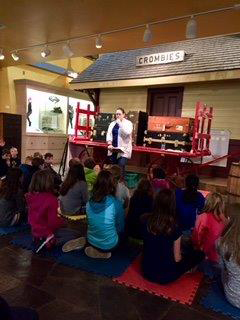 |
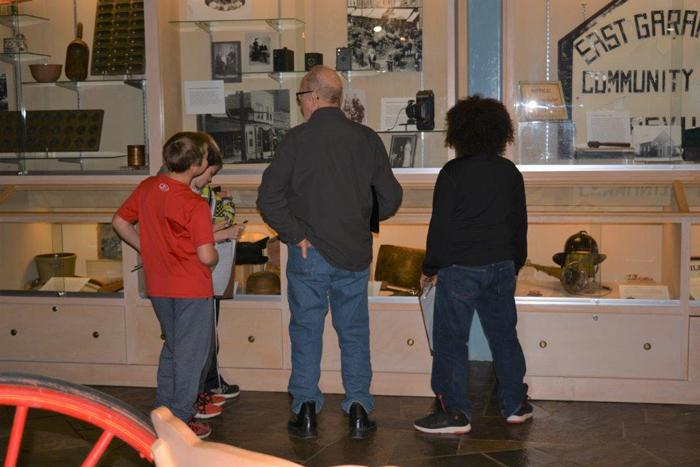 |
|
| Julie McNevin describes day's activities to GrandPal visitors to the museum (left) GrandPals study exhibit and answer questions posed in the display (right) | ||
DANCE
We studied the dance exhibit first. The girls were amused that there was such a thing as a Fan Dance Group back in 1893 where girls moved with poise and precise gestures using lace fans as props in a Japanese style program. A description mentioned that this type of dancing arose because of interest in Gilbert and Sullivan's The Mikado, a musical play. A parallel exhibit featured a modern young girl, Abbey. She'd studied ballet, lyrical, jazz, and tap dancing but prefers to tap. The description in her window reiterated the struggles a dancer experiences to prepare new routines and combat nerves during performances and competitions. The girls were quick to list perseverance, self-confidence, a healthy body, and dedication as traits a dancer needs and agreed that it takes nerve to get up in front of people. When asked if I'd fan danced, I said that fan dancing was well before my time, even before my mother's time, but that country and square dancing were popular in my community, and that currently I liked to ballroom dance. The girls knew about the TV program "Dancing with the Stars." The exhibit allowed these girls and me to relate about a topic of interest across generations. And it allowed me, a senior, to add some information from my years of experience.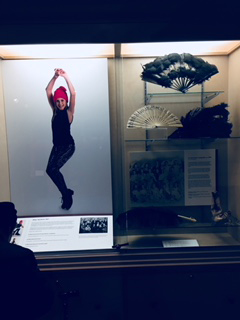
NURSE
As we examined the nurse exhibit, the girls identified the character traits they deemed essential in this profession: being punctual, selfless, caring, generous, having compassion, and accepting responsibility. The first-aid box used by Alice Fenwick, nurse in 1921, was a relic to me too, but the emesis basin and bedpan are still in use. Sheila Rintoul, a Registered Nurse at a Senior Nursing home, was the present-day nurse featured. Daily she is responsible for overseeing patient care, administering medications, and treatments. My girls knew nurses who work at our local hospital, and I pointed out the range of jobs open in Registered Nurses including: Visiting Nurse, School Nurse, Public Health, Cruise Nurse, Instructor in a Nursing School. The girls already had heard about my job as a nurse and child life specialist with hospitalized children. They remembered pictures I'd shown them of frightened children arriving and being left there without their parents, and my stories about how play helped the children express their feelings and to bring back consoling happy memories even when they didn't have the words to tell the nurses and doctors how they felt. They'd seen pictures of the little boy who could control his fear of getting needles by playing doctor and giving shots to a doll and play shots to fellow patients. And they'd seen a picture of the little girl who washed and combed the doll's hair every day, obviously remembering how comforting it was when her mother washed and combed her hair. The nurse/play lady could give her the words she needed to talk about those memories just as adults talk about happy times to cheer themselves up when they are hospitalized.
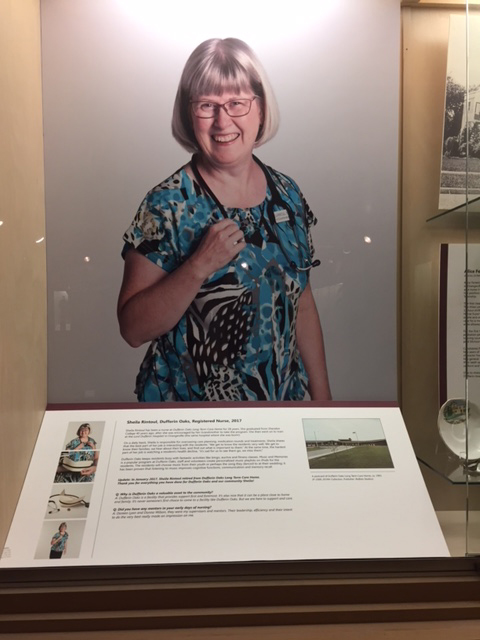
OTHER EXHIBITS
McNevin said that the exhibits on sports and on doctors, nurses and teachers were the most popular with students. Perhaps those professions were familiar; however, other exhibits could open their eyes to additional careers: Artists (dancers, painters, musicians, actors), Farmers (bee keepers), Bootleggers and Breweries, Emergency Services (paramedics, police and community service workers), Shops and stores (general stores, hardware/construction), Service animals, Volunteers (Non-profits), Scouts, Politicians, Journalists, Immigrants/newcomers, Hoteliers (Inns and Taverns), Athletes (hockey, lacrosse), Medical professions, Educational professionals (teachers, principals, librarians).
ARTIFACTS
The afternoon program gave students a chance to compare artifacts from the past to instruments used as replacements in today's world. Children examined items left on tables in the foyer. On a paper mat, they were to write a statement under any one of several categories. (see illustration). Categories included: name of object, description (size, heavy or light, what it feels like), materials it is made of, its use, whether we have a replacement object today, and how the replacement is different, why this object is important for museum display, what heading it should be stored under (education, work, entertainment, sports), and questions the child may have about this object. Seniors could add to information about the object.
My students and I visited the table with a roller skate, just like the ones I used to buckle over my shoes to skate on the sidewalk in front of my house. Students observed: They are made of metal. They have four wheels that spin fast. There is a leather strap to hold it on. The size can be changed. It's for fun. Today we have shoe-skates. We ice skate on the pond by my house. It is in a museum because you can't buy them anymore. It's in the category of sport or entertainment.
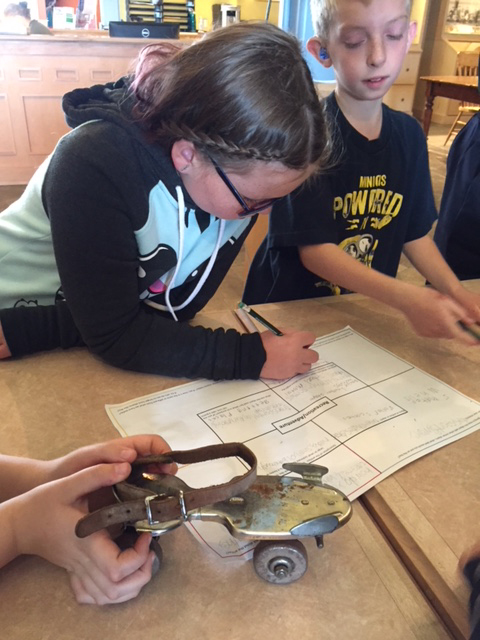
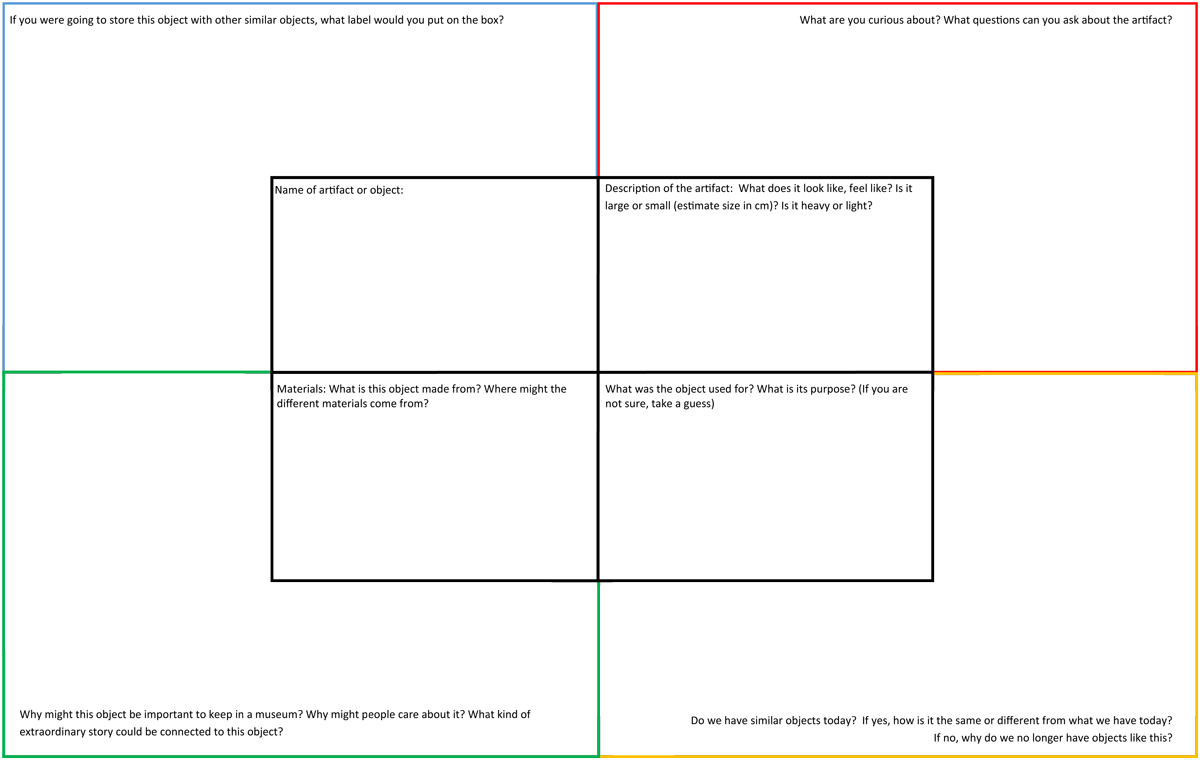
The next table held something that appeared to be a balance scale. The object being weighed would fit into a metal cup-shaped pan, and the weight of the object would cause an arm attached to move a pointer on a graduated weight list. One of the kids reasoned that it was some kind of scale. The rest of us were puzzled about what was being weighed and why. However, one senior had all the answers. Used in the 1940s, it was a scale to sort eggs going to market by size. He explained how eggs are still sorted by size as they roll at different speeds along a conveyer belt. I don't think that my girls were aware that this was a job of egg farmers or that their parent had a choice of egg sizes when she bought eggs at the grocery.
My girls recognized the picture of Queen Elizabeth II on the lid of a cookie tin. They reasoned that it was on something old because the Queen looked very young. They thought the background castles must be where she lived. They argued about what the box was made of--metal, for sure, and I told them it was referred to as "tin," but that is was a grade of steel much like cookie tins of today. One girl pointed to the note affixed inside the lid saying that the queen and Prince Philip came to tour Canada in 1959, and made people curious to know more about the Royal Family. "That's why it's in our museum. It's our history." One senior remarked that on TV he'd seen Elizabeth II's coronation when she became queen in 1953 before their parents had been born. I could add that not many people had TVs in 1953. I was teaching in Japan, on the other side of the earth at that time, and I'd stayed with a friend who had a radio so that, in the middle of our night, we could hear the daytime broadcast of the coronation from London, England.
Other items which we didn't have time to examine included: a yard stick used before Canada converted to the metric system between 1970 and early 1980s, with advertisements of local merchants at addresses known to the students; a metal and wood rotary-style hand mixer (egg beater; a gas-heated iron for pressing clothing, used in 1947/1948; a candlestick telephone from the 1890s to the 1940s, which allowed students to learn about the invention of the telephone by Alexander Graham Bell in 1874 in Brantford, Ontario, not far from Dufferin County; a 1910 wedding dress offered opportunity to discuss changes in wedding attire and wedding practices through the years; a halibut fishing hook made of wood and wrapped with tree root affixed with an iron nail and cord attached to a lure, designed by indigenous groups of Canada, which could inspire discussion about aboriginal life styles and current fishing practices.
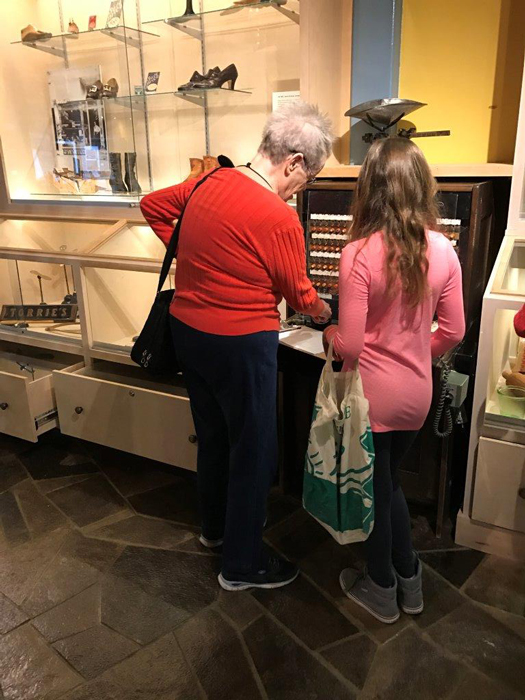 |
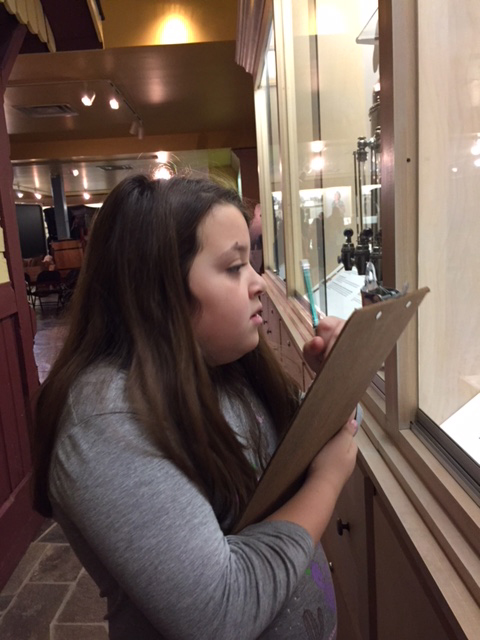 |
|
| Senior explains to student how the central operator connected phone lines years ago (left) Student writes answers to questions posed in the display (right) | ||
PERSONAL STORYTELLING
The visit ended with students sitting on floor mats and hearing stories and seeing props, as a local story-teller recalled stories about his after-school and weekend fun with friends fifty years ago. The ice skating episodes would be similar to the winter fun of our students, but our students have more protective gear.
Application regarding artifact collections
I once was asked to talk to a class of high school students about buying antiques as an investment. The value one puts on an object depends on the material it is made of (whether rare or common), its age, the quality of the workmanship, its use, its condition, whether it has a sensory appeal, and whether collecting that item is in vogue. The worth may not be measured in terms of its monetary value, but to the fact that it stirs memories, increases knowledge, touches senses in pleasurable ways, teaches history. The worth of any item depends upon how much it is valued by people who want it.
Conclusion
While it would be great to have many museums incorporate similar programs, teachers and parents can employ the principal techniques of this program in daily activities to teach young people. Pictures and discussions about various workers in their community can lead to discussions about the character traits, skills and knowledge one needs for that job, and about the rewards one reaps in that line of work. This discussion helps children identify their own personal traits and interests and could lead them to find a passion. The use of story-telling involving seniors or people from other cultures helps the student identify with someone very different and can erase prejudices, and pass along history. Every artifact has a history and can be used to awaken discoveries and encourage storytelling.
Reference:
www.DufferinMuseum.com



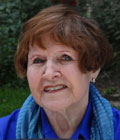 Marlene Ritchie
Marlene Ritchie










